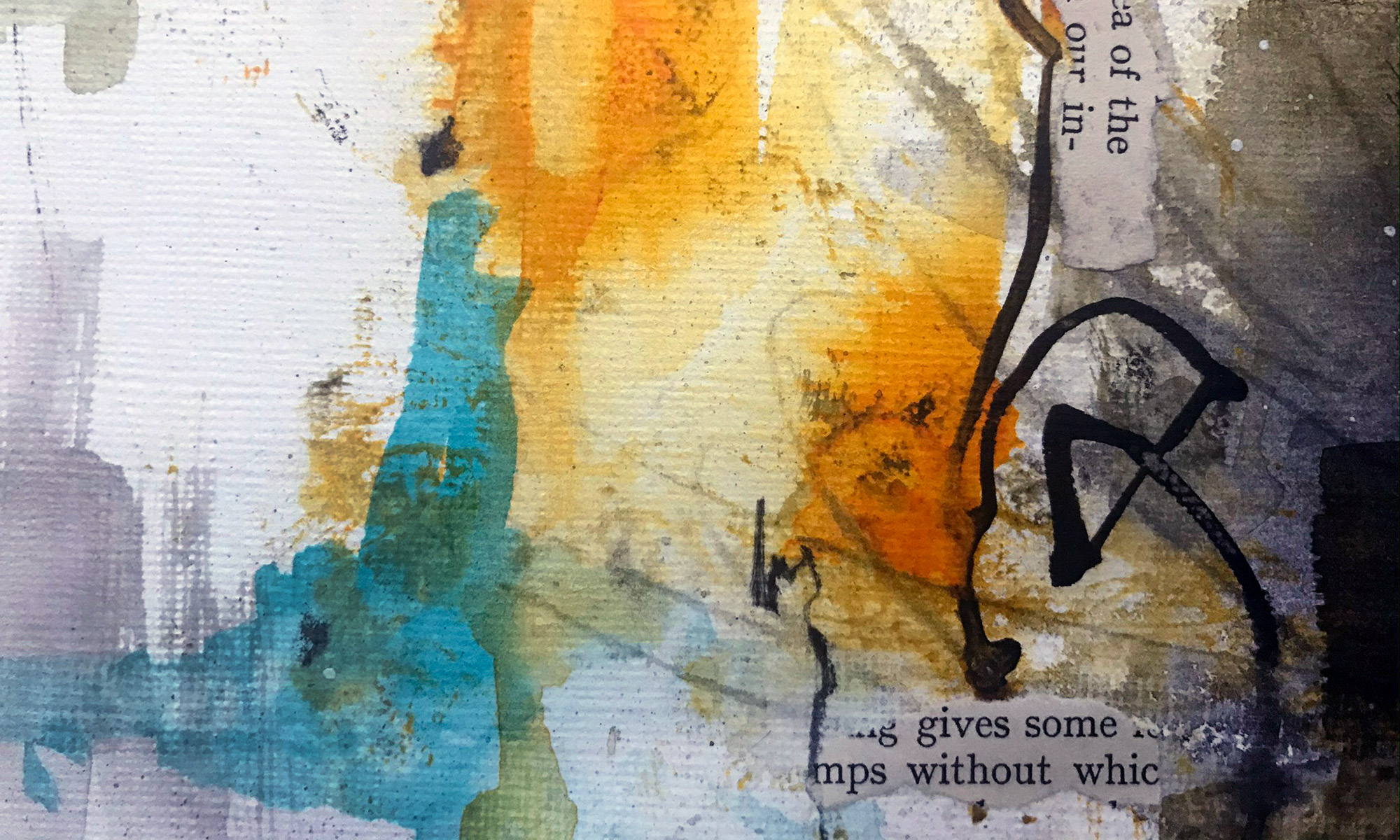This year I exhibited at the Leigh Art Trail with SEVEN Collective at the Refill Room. Our chosen theme for the year was ‘Seasons’ and we each produced 2 x DL concertina sketchbooks: one for autumn and winter; and one for spring and summer. For each season I also took inspiration from a different artist.
Autumn – inspired by Gustav Klimt
Using mixed media and collage, for me, Autumn is all about the rich colour palette of reds, oranges and golds.

Winter – Inspired by William Kentridge
The key visual element of winter, for me, is seeing the silhouette of skeletal trees against the sky.
I had recently visited a William Kentridge exhibition at the RA in London and took inspiration from his use of old text pages for backgrounds and his simple drawn animations.

I created my own simple, stop-frame-animation of trees blowing in the wind which you could see via a QR code on one of my sketchbook pages.
Spring – Inspired by Flora Bowley
My spring sketchbook was heavily influenced by the ‘brave intuitive’ approach of Flora Bowley. As spring was very late to arrive this year it was a difficult sketchbook to start, so I relied heavily on being intuitive. Spring, for me, is all about seeing new life in the garden. Green shoots appear along with springtime flowers: daffodils, tulips, bluebells and my ever-favourite Fritillaria flowers.

Summer – Inspired by Antonio Gaudi
Summer season, for me, is seeing an explosion of bright colours and patterns in the clothes people wear. This reminded me of Gaudi’s mosaics, in particular Parc Guell, Barcelona.

The Leigh Art Trail was on from 8-16 July.
























